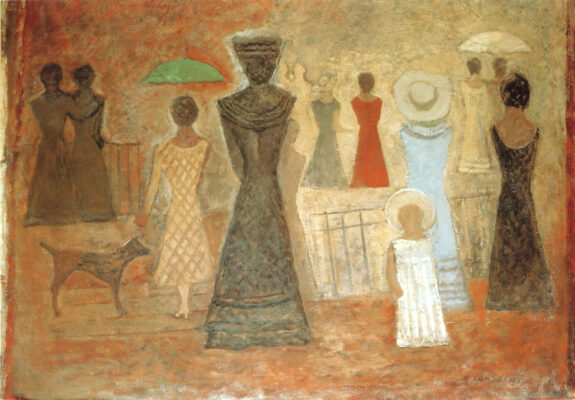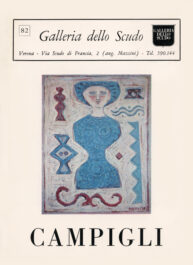Home / Exhibitions / Campigli
Massimo Campigli
23.11.1974 — 23.12.1974
Massimo Campigli
23.11.1974 - 23.12.1974Show introduction
After the exhibitions on Mario Sironi, Giorgio de Chirico and Ottone Rosai, as from November 23, 1974 Galleria dello Scudo presented the works of another master of Italian painting from the first half of the twentieth century: Massimo Campigli.
In the 1910s his passion for painting coexisted with his youthful literary aspirations, so much so that in 1919 Campigli accepted Corriere della Sera proposal and moved to Paris, where he painted during the day and worked for the newspaper at night. The French capital offered him many stimuli and a multitude of models to look at, drawn from tradition as well as from the closest contemporary art: from the Egyptians to Ozenfant, from Crete to Seurat, from Roman painting to Picasso, from Romanesque art to Léger. But it would be in 1928 and more fully since the beginning of the 1930s that the search for an essential figuration emerged, immersed in a silent and astonished world, suspended in the enchantment of far-reaching harmonies and simplified forms, often focused on the search for a feminine ideal transposed into an archaic dimension.
The female element is indeed the leitmotif of the overview of the artist's work presented for the occasion in Verona. Through a selection of paintings – some of which with large sizes – we retrace the evolution of a language evolving from the references to the Etruscan world, recurrent in the works of the 1930s, into totemic images, in which color takes on new compositional values.
Ideal figures, engrossed, as if smiling after mysterious revelations, ready to exhibit jewelry, fans, dresses and parasols – accessories of a kind and graceful world that finds its raison d’être in the intimate correspondence with the lyrical value of a reality that stirs the imagination. These images are affected by archaism and Mediterranean classicism, as well as by Egyptian hieratic order or Indian plasticity: these are the elements of an exhibition path aimed at documenting Campigli’s entire pictorial parable, from canvases such as Bambina (1932) and La passeggiata (1932) to Le donne e la giostra (1947) and Vetrine (1953), up to L'idolo blu (1963) and Femme et fenêtre (1968) of the last period. The exhibition in Verona was also accompanied by a rich section dedicated to drawings and graphics, including etchings and lithographs, boasting the typical subjects of the artist's expressive repertoire.




